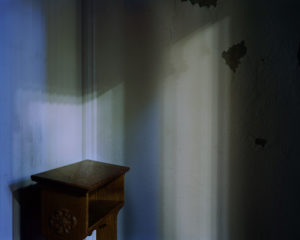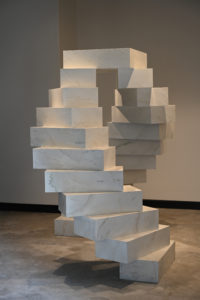Image: The National Museum of African American History and Culture, the National Museum of American History, and the Anacostia Community Museum together are collecting objects relating to the protests in the wake of George Floyd’s murder. Were there particular challenges you and your colleagues faced as you prepared to collect material during this weighty moment?
Aaron Bryant: Collecting objects to help preserve this moment takes the subjectivity of humanity, as well as the objectivity of history. This isn’t about objects, really. It’s about narratives of humanity, where objects are merely tropes for human experiences. When people donate objects to our collection, we have to be prepared to meet their expectations that we will preserve both the objects and the experiences they represent.
Image: How do you prepare yourself to maintain that human dimension of collecting?
AB: You read as much as you can about an event; you stay informed about what led to key moments. Then you let all of that go and move beyond being an observer to being an informed participant who is connected, in some way, to the communities and cultures shaping the movement. You become a stakeholder. Observers can only objectively study a culture or community from a distance. They are removed from the voices and experiences, the purpose and people, who are shaping and redefining history.
Image: As you began talking to people around Lafayette Square in Washington, DC, where many protests have occurred, what surprised you most?
AB: I was surprised by how Lafayette Square had become a pilgrimage site of sorts. I met people there from different parts of the country who came to feel a part of history. Many ordinary people visited the site because they had become more invested in civic engagement and being active participants in shaping democracy. History happens around us every day, and people can choose between being an observer or participant. I was surprised to meet so many people who had decided that they had a role to play.
I was also surprised by the tangible humanity represented in the objects that people left behind, like protest signs, banners, murals, and even art installations.
Image: This moment seems to be over-brimming with imagery. What particular objects have spoken to you as works of art in their own right, beyond their social significance?
AB: Out of the hundreds of signs I saw, there was one I’ll always remember. It was painted on tattered black poster board, taped to the plywood panel of a construction barrier at the US Chamber of Commerce building. In large white letters it read, I miss my dad!! The word dad was underlined in red, and at the bottom were pink and red hearts. Each sign represents a person’s humanity. To see them together is to see voices of humanity on display. We can relate on a visceral level, and I believe the message will stand the test of time and resonate with people of all cultures, for generations. Even two hundred years from now, the sign and its message will represent the humanity of this movement and moment in time.
There was also a three-dimensional installation by fashion design student Isamu (Ken) Kawashita at Lafayette Square that I found moving. It represents the global scale of this movement.
Image: Religion has played a pivotal role in the struggle for justice for people of color in America. How have you witnessed religion surfacing in the visual culture of these protests in interesting ways?
AB: The role played by Saint John’s Church comes to mind. That’s the church where the president gave a press conference while holding a Bible after police drove demonstrators from Lafayette Square. Saint John’s has become a gathering place for demonstrators, and the church hopes to have the plywood that now covers its windows painted by artists as part of an art initiative organized by DowntownDC BID.
Then, artists have painted murals with messages of faith and hope. I find Shawn Perkins particularly interesting. A DC restaurant has one of his large canvases in its window of Siddhartha in the iconic meditative position. In another interesting piece of his, a woman appears to be praying, and it reads, “Let your dreams be bigger than your fears; your actions louder than your words; and your faith stronger than your feelings.”
Artists like Titus Kaphar have made interesting commentaries, like Kaphar’s June 15 Time magazine cover, which draws on the Madonna and Child iconography.
Aaron Bryant is curator of photography, visual culture, and contemporary history at the National Museum of African American History and Culture. He was previously a curator at Morgan State University’s James E. Lewis Museum of Art in Baltimore. He earned his PhD from the University of Maryland and MFA from Yale.











